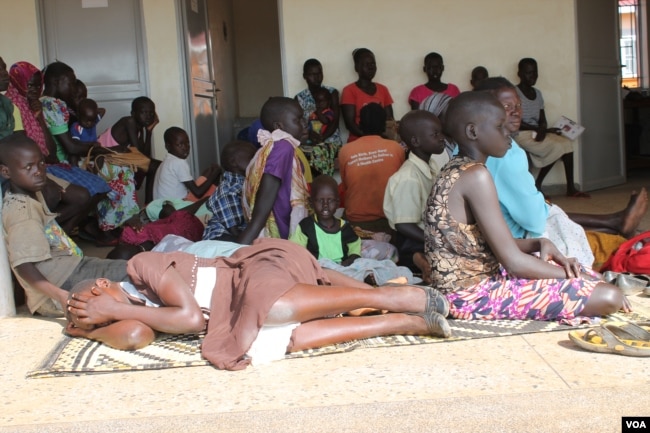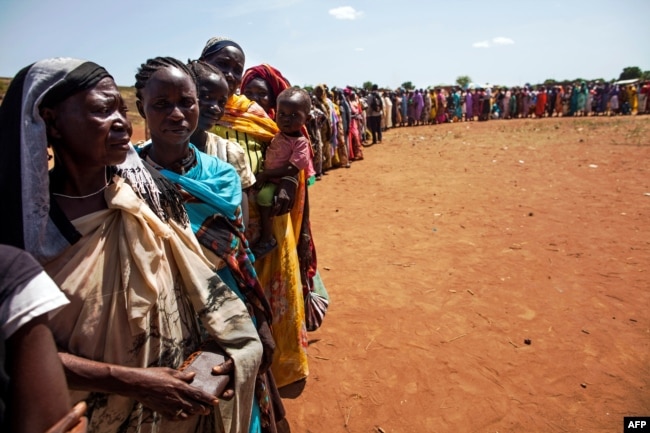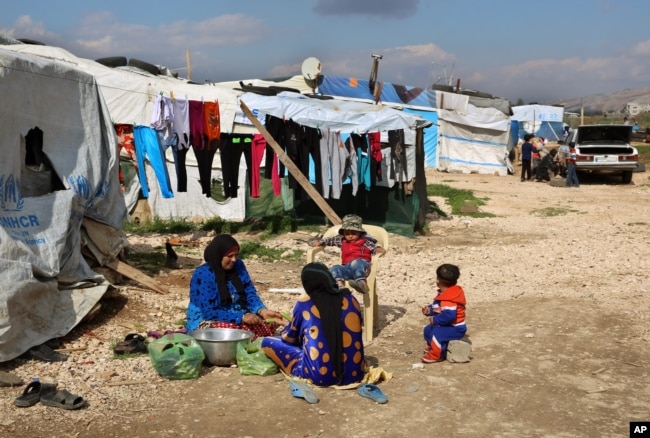The U.N. refugee agency’s “Global Trends Report,” released on the eve of World Refugee Day, June 20, shows an unprecedented 65.6 million people were determined forcibly displaced at the end of 2016, an increase of 300,000 over the previous year. Nearly two-thirds of this total are people who have been forcibly displaced within their own country. Refugee numbers worldwide have reached 22.5 million, which the report notes “is the highest ever seen.” The UNHCR reports that one in every 113 people worldwide is either a refugee or is forcibly displaced within his or her own country. Of the 65.6 million people that were found displaced last year, the report notes that 10.3 million were newly displaced, which equates to one person becoming uprooted every three seconds.
People displaced by conflict wait to be registered by the International Organization for Migration and the World Food Program, in Wau, South Sudan
While people continued to flee in record numbers, the report found that last year around one half million refugees returned home and about 6.5 million internally displaced people went back to their places of origin although “many did so in less than ideal circumstances and facing uncertain prospects.” Filippo Grandi, High Commissioner for Refugees said, “It is an extremely moveable situation, an extremely dynamic situation, which reflects in turn conflicts that continue to affect mostly and primarily and very violently civilians.”
Syria tops list
Data show that the Syrian conflict has generated the largest numbers of displaced people worldwide, with 12 million people, or nearly two-thirds of the population, either internally displaced or living as refugees, mainly in five neighboring countries — Turkey, Jordan, Lebanon, Iraq and Egypt. “Turkey continues to be for the third consecutive year, the largest hosting country,” said Grandi. “But, Lebanon, another one of the neighboring countries, is the country that has the highest per capita ratio compared to the local population in terms of the number of refugees.”
Syrian women prepare food for their families outside their tents, at a refugee camp in the town of Bar Elias, in Lebanon's Bekaa Valley
The report notes Afghanistan and Iraq have the second and third largest numbers of forcibly displaced people and that South Sudan has the world’s fastest growing refugee and displacement crisis. “The report, which records statistics at the end of 2016 indicates [that] 1.4 million refugees from South Sudan [are] in neighboring countries and almost two million internally displaced people,” said Grandi. “Those figures are probably higher. We certainly have counted at least half a million more in the first semester of this year in terms of refugees.” He added that most of the South Sudanese have sought refuge in neighboring Sudan, Uganda, Ethiopia, Kenya, Democratic Republic of Congo and Central African Republic.
The report notes that most refugees — 84 percent — are in developing countries, half of them children. While the world’s poorest nations shoulder the greatest burden of the global refugee crisis, the report found that most of the 2.8 million asylum claims made in 2016 were lodged in rich countries. The UNHCR said the largest recipient of new asylum applications was Germany with more than 722,400 registered last year. The United States came in second with 262,000 newly filed applications. The report called the large number of unaccompanied children asking for asylum a growing and unsettling development. “Tragically, 75,000 asylum claims were received from children travelling alone or separated from their parent.” The UNHCR report added that even this number probably “underestimated the true figure.”
Declining aid contributions[/uel]




